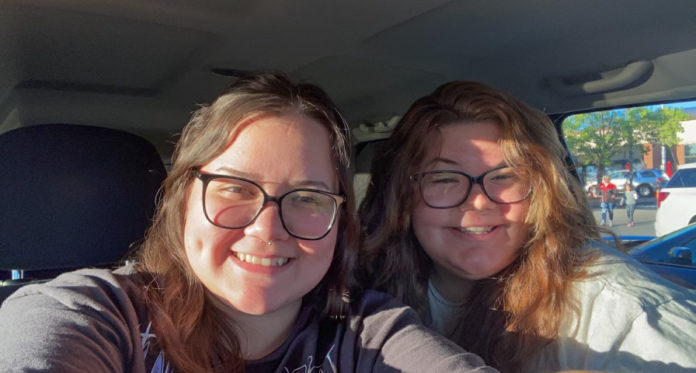CONTENT WARNING: This article contains mentions of mental health and other potentially sensitive topics. Please use caution before reading.
Mental health is just as important as physical health, they say. When you call to make a physical check-up appointment, you can get in within days, sometimes hours.
But if you were to call to get in with a therapist or psychiatrist, the national average wait time is seven and a half weeks. However, there are facilities where you have to wait much, much longer than that.
In most circumstances, it’s hard enough to reach out for help and acknowledge that you need it. But when the “help” isn’t actually attainable, that can set you back even further in the process.
Treatment being inaccessible
Many people go through life not knowing they struggle with mental health issues, or they just push through it and deal with the consequences. Receiving mental health care is extremely inaccessible. Various crisis and helplines are in place as a resource for those struggling, but how much help do they really provide?
The National Sucide and Crisis Line (988) is an active resource across the U.S. This lifeline is made up of various local and state-funded crisis centers across the country. Throughout the years of its existence, people have had complicated feelings surrounding the productivity of this as a helpful resource.
Recognizing you need help is a huge step in the process, which some don’t even reach until it’s too late. These resources aren’t exactly helpful when most cases are reactive, not proactive.
The National Alliance on Mental Illness (NAMI) outlines various parameters of an effective crisis line. This includes things such as a 24-hour crisis line, the option for walk-in crisis services, and mobile crisis teams.
These are very dependent on location, resources and funding. In a larger city or even a more democratic area, these may be more accessible. For a small town like Slippery Rock, these resources are nearly obsolete.
In Sarah’s experience, by the time she realized she needed help, a crisis line would have been too late. Even then, the hospital could’ve been too late, as she waited for over eight hours before knowing if she would be accepted to a facility.
You could then discuss the disparities between adolescent and adult mental healthcare accessibility. As a minor, Sarah only had two hospital options for in-patient care, and both were full while she was waiting to be admitted. Thankfully a kid was being discharged right before the ER was about to send her home.
Being accepted into a facility isn’t the case for everyone. In-patient facilities are often overcrowded, and beds are usually given to those with the most severe symptoms. How is it fair to say whose symptoms are worse than the other? How long is it going to take for mental health care to be accessible to everyone?
Long-term therapy and mental illness
There is more of an emphasis on crisis mental health services than on providing long-term care to those with mental illnesses. Crisis hotlines are a temporary, immediate resource, but where should someone go afterward?
According to Psychology.org, the average wait time for counseling is six weeks. This time can be extended to several months if someone is looking for a specialist, for example, a trauma therapist.
In seeking long-term care, Nina waited over six months to find a therapist who was accepting new clients and specialized in trauma. Once she did find an available specialist, the earliest appointment was over a month away.
Even the minimum six week-wait time could be too long for someone, let alone an instance of multiple months. And finding a therapist that is taking new patients, and fits various other criteria someone may have, is a whole other battle.
Whether a person is insured creates even more challenges for receiving mental health care. As if it isn’t already a challenging process, money can make or break seeking help at all for many people.
No health insurance? Big problem.
The number of uninsured persons in the United States has surprisingly lowered in recent years, though the statistic is still shocking. About 1 in 10 Americans do not have health insurance, which is more than 30 million people.
People who are uninsured have less access to medical services, receive poorer quality of care and experience worse health outcomes than insured adults. This is a whole different problem in and of itself. Put simply, uninsured adults have another obstacle to jump through when trying to get help.
In-network and out-of-network care
In a study by NAMI, more than half of respondents said they contacted a psychiatrist who was not accepting new clients or didn’t accept their insurance.
When people face higher out-of-pocket costs due to out-of-network therapy, it may lead to them seeking less care, or going without any care at all.
Even in terms of mental health prescribers, survey participants were about 70% more likely to report difficulty finding a prescriber who would accept their insurance than other types of specialty medical care.
The cost of medication is always tricky to navigate, but especially with out-of-network care. Typically, uninsured patients are left paying the full price of the prescription. Depending on what the medication is, that could be upwards of hundreds of dollars.
Even in-network costs of prescriptions can be expensive and unattainable, once again, depending on what it is. Nina spends more than $50 a month on three prescriptions, on top of a $60 co-pay for therapy, etc.
In- and/or out-of-network care is absolutely not conducive to people with financial insecurity.
Sky-high out-of-pocket costs
Both counseling and in-patient care have ridiculously high prices. With insurance, most people still have copays and without insurance, the prices are still expensive.
According to Forbes, a therapy session can cost between $100 to $200 per session without taking insurance into account. This can increase or decrease depending on the state, private practice, billing cycles and more.
There are many alternatives to the “traditional” therapy people imagine: sitting in a chair across from a person in a blank room. With the advancement of technology, and this being even furthered with the COVID-19 pandemic, online therapy has been a growing field.
Companies like BetterHelp and TalkSpace have cornered the market on more accessible mental health services in terms of location and benefits for the user and counselor, but these services are even less so covered by insurance.
According to an article from BetterHelp, as time goes on insurance companies are beginning to cover more costs for online therapy. Either way, online or not, there are costs that come along with counseling.
A common service that is often too taboo to talk about the price of is inpatient treatment. The prices can vary based on the hospital, the treatment and care someone is receiving and how long the stay is. Pubmed.org shares data showing that treatment can cost anywhere in the range of $3,600 to $8,500.
For reference, Sarah had an approximately fifteen-day stay at a local hospital where she received many different services. When the bill arrived in the mail, it was nearly $8,000. Thankfully, insurance covered most of the bill. But the shock of how much it truly costs to receive in-patient care is sickening.
Is there a solution?
The American healthcare system is a mess. Narrowing in on mental healthcare specifically, there is no overarching solution to these problems. We merely wanted to discuss some of the main problems within mental health services and the healthcare system.
There is a deep systematic change that needs to be made in order for progress to be seen.
We have not even scratched the surface of these issues and how deep they go. This is just the tip of the iceberg.







